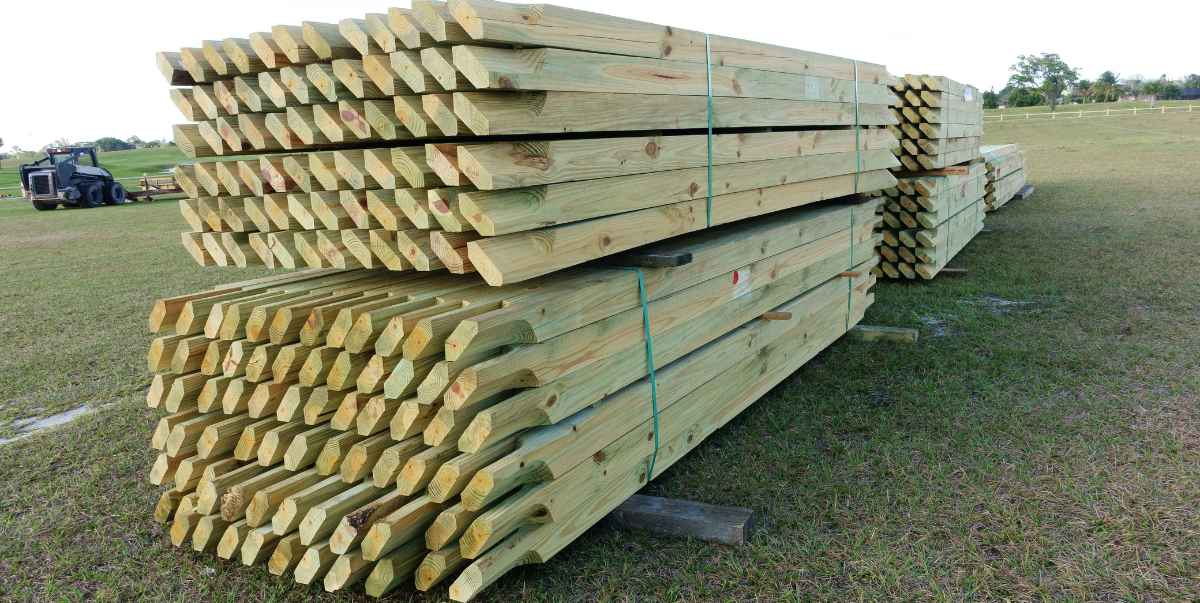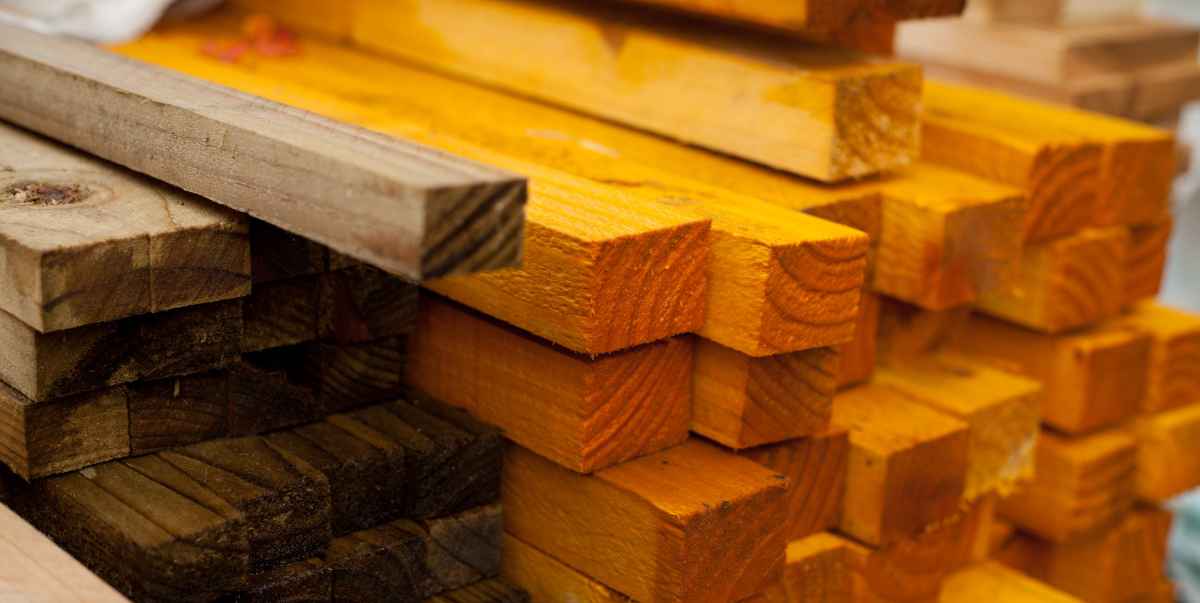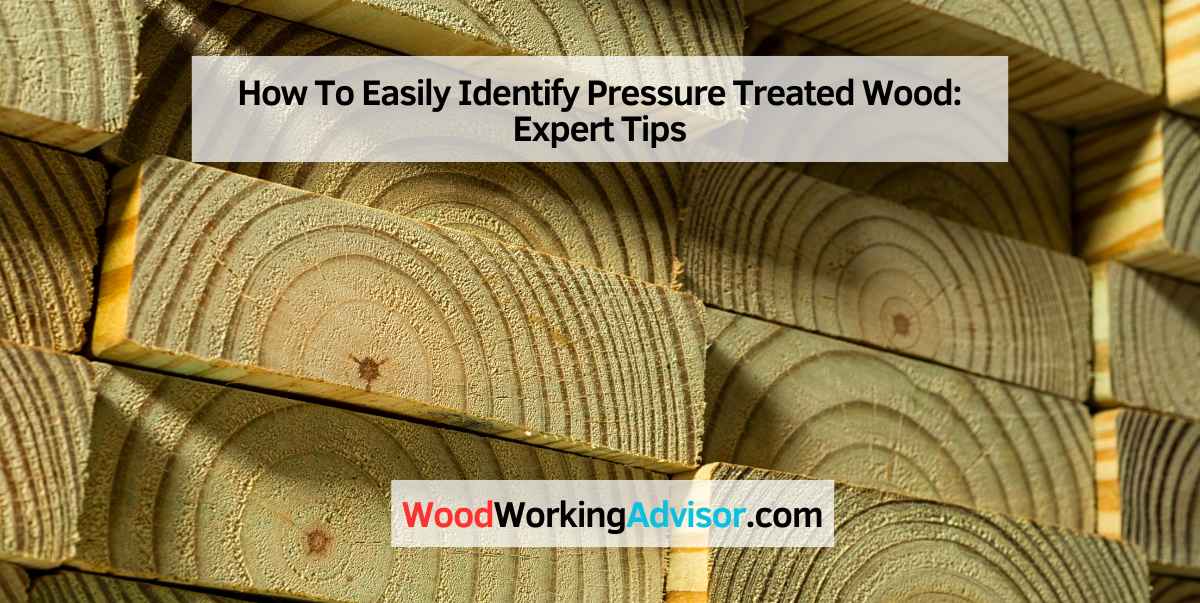To determine if wood is pressure treated, look for visible signs such as stamps or tags on the wood indicating it has been treated. Another way is to check for a greenish hue or slight dampness on the surface of the wood, which are both indications of pressure treatment.
Wood that has been pressure treated is commonly used for outdoor projects such as decks, fences, and landscaping structures due to its resistance to rot and insect damage. It is important to be able to identify pressure treated wood in order to ensure its proper use and maintenance.
By following these simple guidelines, you can easily determine if the wood you are working with has been pressure treated or not.
Differentiate Between Pressure Treated And Untreated Wood
When it comes to woodworking, it’s important to understand the difference between pressure treated wood and untreated wood. Pressure treated wood is specially treated to resist rot and decay, making it perfect for outdoor projects such as decks and fences. On the other hand, untreated wood is more susceptible to fungal decay and insect infestation. In this article, we will explore two easy ways to differentiate between pressure treated and untreated wood:
Look For The Greenish Tint
One of the key indicators of pressure treated wood is the presence of a greenish tint. Pressure treated wood is treated with chemicals, such as copper-based preservatives, that give it a distinct green hue. When inspecting a piece of wood, carefully examine its surface and edges for any signs of this tint. However, keep in mind that over time, weather and exposure to sunlight can cause the green color to fade, so this method may not be foolproof.
Check For Stamped End Tag Or Label
Another reliable way to determine if wood is pressure treated or untreated is to look for a stamped end tag or label. Manufacturers of pressure treated wood are required to mark their products for identification. These markings typically contain important information, including the type of wood, the preservation process used, and the level of treatment. Look for stamps or labels that indicate the wood has been pressure treated, and if found, you can be confident that the wood is suitable for outdoor use.
In conclusion, differentiating between pressure treated and untreated wood is essential in choosing the right materials for your woodworking projects. By looking for the greenish tint and checking for stamped end tags or labels, you can easily identify the type of wood and make informed decisions to ensure the longevity of your creations.

Understanding The Pressure Treated Wood Standards
When it comes to identifying pressure treated wood, understanding the applicable standards is essential. By familiarizing yourself with the industry standards, you can quickly determine whether the wood has undergone the necessary treatment processes. This knowledge will help you select the right type of wood for your specific woodworking projects and ensure that it lasts for years to come.
Learn About Awpa Standards
The American Wood Protection Association (AWPA) sets the standards for pressure treated wood in the United States. These standards outline the required levels of treatment and indicate how long the wood is expected to last when used in various applications. Familiarizing yourself with the AWPA standards is a crucial step in identifying pressure treated wood.
Familiarize Yourself With Acq And Ca Standards
When it comes to pressure-treated wood, two common treatments are ACQ (Alkaline Copper Quaternary) and CA (Copper Azole). ACQ-treated wood is treated with a combination of copper and quaternary ammonium compounds, providing excellent protection against rot, decay, and insect infestation.
- ACQ-treated wood is typically identified by a greenish tint.
- CA-treated wood, on the other hand, is treated with copper and azole compounds, offering similar protection but with a lighter, less obvious coloration.
Knowing the characteristics and appearances of these two treatments will help you recognize pressure treated wood more easily.
Identifying The Common Uses Of Pressure Treated Wood
Pressure treated wood is a popular material used in outdoor construction and other projects due to its durability and resistance to decay. By understanding the common uses of pressure treated wood, you can easily identify whether a piece of wood has been treated or not. In this article, we will explore the various applications of pressure treated wood, helping you determine its presence in different projects.
Know Its Outdoor Applications
Pressure treated wood is widely used in outdoor projects due to its ability to withstand the elements and resist rotting. Some common outdoor applications of pressure treated wood include:
- Decking: Pressure treated wood is often used for building decks and outdoor platforms due to its durability and resistance to moisture.
- Fencing: Pressure treated wood is an ideal choice for fences as it can withstand exposure to rain, sun, and other weather conditions.
- Landscaping: Pressure treated wood is frequently used for garden beds, retaining walls, and other landscaping projects where durability is essential.
- Outdoor furniture: Many outdoor furniture pieces, such as picnic tables, chairs, and benches, are made from pressure treated wood to ensure longevity.
Recognize Its Role In Structural Projects
Pressure treated wood is also commonly used in structural projects due to its strength and resistance to decay. It plays a vital role in:
- Building foundations: Pressure treated wood is often used for constructing the foundation of structures to provide added stability and protection against moisture.
- Support structures: Beams, joists, and posts made from pressure treated wood are essential components of many structural projects, such as decks, porches, and outdoor shelters.
- Marine applications: Pressure treated wood is used in dock construction, boat decks, and other marine projects where exposure to water and harsh weather conditions is common.
- Utility poles: Many utility companies use pressure treated wood for utility poles due to its durability and ability to withstand various environmental factors.
By familiarizing yourself with the outdoor and structural uses of pressure treated wood, you can easily identify if a piece of wood has been pressure treated. Remember that the treatment process imparts a distinct greenish hue to the wood, which is often a noticeable indication of pressure treatment. However, it is crucial to handle pressure treated wood with caution, as it contains chemicals that can be hazardous if ingested or inhaled. Therefore, it is essential to take appropriate safety measures when working with pressure treated wood.
Spotting Signs Of Weathering And Aging
Spotting signs of weathering and aging in wood can help determine if it is pressure treated. Look for cracks, splinters, discoloration, and warping, which indicate untreated wood.
One of the key indicators of pressure treated wood is the visible signs of weathering and aging. Over time, wood that has been treated to withstand outdoor conditions will show specific characteristics that differentiate it from untreated wood. By being able to recognize these signs, you can determine whether the wood in question has been pressure treated or not. In this section, we will explore two important signs: color fading and grey patina, as well as cracks and splintering.
Observe Color Fading And Grey Patina
When pressure treated wood ages, it begins to exhibit certain visual changes. One of the most noticeable signs is color fading. Freshly treated wood typically has a greenish hue due to the chemicals used during the treatment process. However, as the wood weathers and ages, this green tint gradually fades, giving way to a more natural-looking color. If you notice that the wood’s original green color has significantly diminished or faded entirely, it is a strong indication that the wood is pressure treated.
Another sign to look out for is the development of a grey patina. As pressure treated wood is exposed to the elements and ultraviolet (UV) radiation from the sun, it undergoes a natural change in appearance. The wood gradually takes on a greyish tone, which is caused by the breakdown of the chemical compounds used in the treatment process. If the wood you are inspecting has a grey patina, it is likely pressure treated.
Look For Cracks And Splintering
In addition to changes in color, the aging process of pressure treated wood can also lead to structural changes. Over time, the wood may develop cracks and splintering, which are telltale signs of weathering. These cracks and splinters occur as the wood expands and contracts due to fluctuations in humidity, temperature, and overall exposure to the elements. If you notice any cracks or splintering on the wood’s surface, it is a good indication that it has been aging and thus, is pressure treated.

Considerations For Safety And Handling Of Pressure Treated Wood
Pressure treated wood is commonly used in outdoor construction projects for its durability and resistance to rot and insects. However, it’s important to take proper precautions when working with pressure treated wood to ensure your safety and minimize any potential health risks. Here are two essential considerations:
Take Precautions When Cutting And Sanding
Cutting and sanding pressure treated wood can release potentially harmful chemicals, such as arsenic, copper, and chromium, into the air and onto your skin. To protect yourself:
- Wear safety goggles or a face shield to shield your eyes from flying debris.
- Wear a dust mask or respirator to prevent the inhalation of wood dust.
- Wear long sleeves, long pants, and gloves to protect your skin from direct contact with the wood.
- Work in a well-ventilated area or use exhaust fans to minimize exposure to airborne chemicals.
Dispose Of Properly
Disposing of pressure treated wood requires special attention due to the chemicals it contains. Follow these guidelines for safe and environmentally responsible disposal:
- Do not burn pressure treated wood, as it releases toxic fumes into the air.
- Do not throw pressure treated wood in regular trash or recycling bins, as it can contaminate the soil and water.
- Check with your local waste management facility or municipality for proper disposal options, such as designated drop-off locations for hazardous materials.
By taking these precautions and ensuring proper handling and disposal of pressure treated wood, you can minimize any potential risks to your health and the environment. Remember, safety should always be a top priority when working with any construction materials.
Conclusion
Identifying pressure-treated wood is crucial for various woodworking projects. By using various visual cues, such as color, odor, and appearance of the wood, you can determine if it has undergone the treatment process. Additionally, performing a simple water test can further confirm if the wood is pressure treated.
Remember to always prioritize safety measures when handling and working with wood. Gain confidence in distinguishing pressure-treated wood for your projects and ensure long-lasting results.


